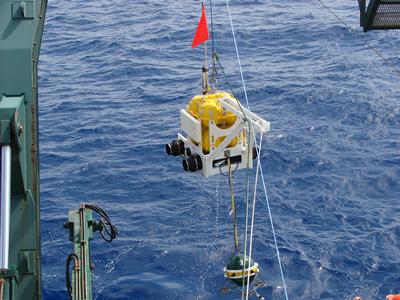Academic profile – Dr Kate Rychert. Investigating mantle plumes in the depths of the world’s oceans
Dr Kate Rychert is a Lecturer of Geophysics at National Oceanography Centre Southampton, the waterfront campus of Ocean and Earth Science, and home to one of the largest earth and marine science communities in Europe.
Dr Kate Rychert is a Lecturer of Geophysics at National Oceanography Centre Southampton, the waterfront campus of Ocean and Earth Science, and home to one of the largest earth and marine science communities in Europe.
Researching seismology, the scientific study of earthquakes and seismic wave propsgation through teh Earth has interested Dr Kate Rychert, since the start of her academic career. Part of her research in the depths of the world's oceans involves investigating mantle plumes, streams of hot rock rising up from the Earth's core.
"It's a fascinating subject and very relevant to the world we live in," Kate explains.
They are thought to be behind some of the Earth's more active volcanoes located in the middle of tectonic plates, for example, those of Hawaii. Seismic waves deep beneath the seabed are used to detect these plumes and Kate's work involves using seabed sensors to collect high resolution seismic data. She uses the data to detect variations in seismic wave speed. These can be used to image the base of the tectonic plate and also to locate regions of the mantle where temperature anomalies or even a small amount of melt might exist.

A recent article in Nature Geoscience magazine describes her recent analysis of data from a warm region discovered around 150 kilometres under the sea off Hawaii, 100 kilometres from the nearest island. This could mean this particular plume bends as it reaches the surface. Kate also spoke to the American Geophysical Union about her discovery of similar features in the Galapagos Islands, Iceland and the Afar region in Eastern Africa. "This research is important for our understanding of Earth processes including its formation and evolution. It may help us predict earthquakes and eruptions and could hold clues to climate change," she says.

Kate studied for her undergraduate degree at Boston University and her masters and PhD at Brown University before taking a postdoctoral post at Scripps Institute of Oceanography. She crossed the Atlantic for a fellowship of the Natural Environment Research Council (NERC) at the University of Bristol before joining Ocean and Earth Science at Southampton in 2011 to become part of a lively group of seismic researchers working on a range of cutting-edge issues.
Currently on maternity leave, Kate is pleased to be part of a Faculty of Natural and Earth Sciences initiative to support female academics to maintain links with their research. A University grant enables a recently hired postdoctoral researcher, Dr Savas Ceylon, to continue work on several of her projects while she is on leave.

Image to show: A thermal plume impinges on the LAB (green line) 100 km west of Hawaii, depressing the onset of melting (red). The plume either naturally approaches from the west (blue arrow) or is diverted (purple dashed arrow) by a restite root (purple oval). Layered regions include the lithosphere (dark blue layer), the melt-rich zone (pink) and the asthenosphere (cyan and pink layers). Melt travels towards the island of Hawaii (red dashed arrow), directed by a gently sloping permeability barrier at the LAB and/or pre-existing lithospheric fractures (back lines) caused by volcanic loading27.